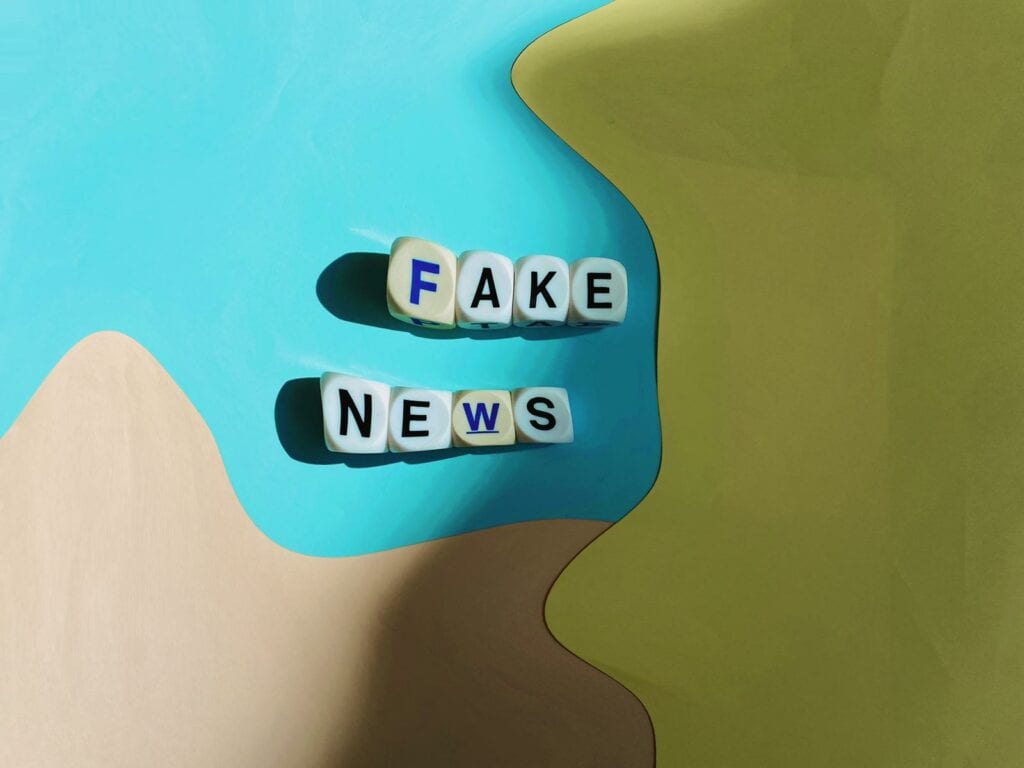Fake News Truths – Avoid Misinformation To Optimise Your Social Media Marketing

Do you feel susceptible to Fake News online? If so, you are not alone. We are living in a world of misinformation, which can often feel impossible to escape. The last thing you as a marketer wants to do is add to it. Read our tips below to prevent you or your company from engaging in this digital deceit.
The Rise of Fake News in the Age of Digitalisation
The rise of the internet has promoted several channels of communication. This has allowed Fake News to thrive. But, the truth (HA!) is that there has always been Fake News, it has just never been so widespread.
“Media is no longer passively consumed – it’s created, shared, liked, commented on, attacked and defended in all sorts of different ways by hundreds of millions of people.”
Hugh Linehan
Four Types of Fake News
1.iSatire or Parody
Websites such as the Daily Mail publish humorous Fake News in an attempt to ridicule the media. But, when these stories are shared out of context they may be misinterpreted.
2. Misleading News
This is when legitimate facts are selectively worded in order to gain headlines. The information is not completely false, however, it is phrased to be purposely misleading. Unconscious biases and conspiracy theories tend to fall here.
3. Sloppy Reporting
As the name suggests, this stems from human error, it contains some truth but is not fully fact checked.
4. Clickbait or Propaganda
This is intentionally deceptive. Companies use sensationalist headlines to gain clicks and make money. These stories are made to look like ‘real’ brands and they often employ visuals that have been manipulated or edited.
But How Does This Relate To Marketing?

As outlined in our Digital Marketing blog, it is essential for startups to have a digital presence. Most social networking sites are free, therefore, organic marketing can be done at nearly zero cost. The reach of these channels indicate that campaign publicity spread is not one to one interaction, but one to thousands.
Social Media also offers distinct advantages to marketers when forming relationships with customers. Algorithms used by powerful tech companies such as Google and Facebook are designed to personalise content to user profiles. Customers can then develop a commonality with companies, which will enhance trust. But trustworthy customers are more likely to believe the first thing they see, right?
A 2021 study showed that 86% of Americans get their news from digital platforms. From that, 53% of them get it from Social Media (1). These stats highlight the trust people have in these digital platforms.
The Negative Impact of Fake News on Marketing
In 2013, the World Economic Forum named digital misinformation a major technological and geopolitical risk. Currently, we can see these risks unfold. The coronavirus outbreak is a major target for the spread of Fake News. A brief scroll through Twitter reveals thousands of posts conveying the effectiveness of Miracle Mineral Solution as a cure for the virus. When in reality, ingestion can be fatal… a huge effect of misinformation.
Corporate missteps: It Could Be You
The implications for you as a marketer can also be worrying. Association with Fake News has damaged the reputation of some well-known brands in the past and continues to do so. For example, in 2016, Kellogg Co. pulled all of their ads from Breitbart News over their tendency to spread hate speech and publish right-winged misinformation. Breitbart retaliated spreading the hashtag #DumpKellogs, which got trending. This resulted in negative publicity and a drop in share prices for the cereal brand.
Additionally, in 2017, a fake video showed a Tesla “self-driving vehicle” slam into a robot. This went viral, with headlines claiming “Self-driving Tesla car kills robot.” Tesla’s stock was trending upwards in the days leading up to the event. On this day, the stock price opened at roughly $341.96 per share, it hit a low of $321.01 and then, finally closed at $335.35. The Fake News shook many customers and the confidence they had in the new technology.
These are few of many Fake News incidents. In both examples, the power of social media prevailed. In order to maintain a reputable brand, companies must be more attentive to who they confide in and the information shared about them.
3 Steps To Avoid The Implications Of Fake News
1. Think Outside The Box
To attract your target market, use unique, reliable and engaging content. Read our article Branding on Twitter to pick up some tips on how to ‘think outside the box’ when creating content.
2. Fact Check
Fact Check! BBC and Channel 4 have provided fact checking sites to prevent the public from being misled. Ensure to verify all sources when sharing information or marketing a product.
3. Keep it classy
Fake news is cheap to produce. Genuine journalism is expensive
Toomas Hendrik Ilves
Research shows that sources of Fake News indirectly affects behavioural intentions toward other brands advertised on the same webpage. Conduct thorough research on websites before advertising on them. Ensure that the website you are using have a mission and values that you support and are in line with.
Best of luck!
Enjoyed reading this article? You can read more about how technology has changed marketing here, or, return to our home page to find more interesting blogs.
Bibliography:
- www.pewresearch.org/fact-tank/2021/01/12/more-than-eight-in-ten-americans-get-news-from-digital-devices/





Recent Comments